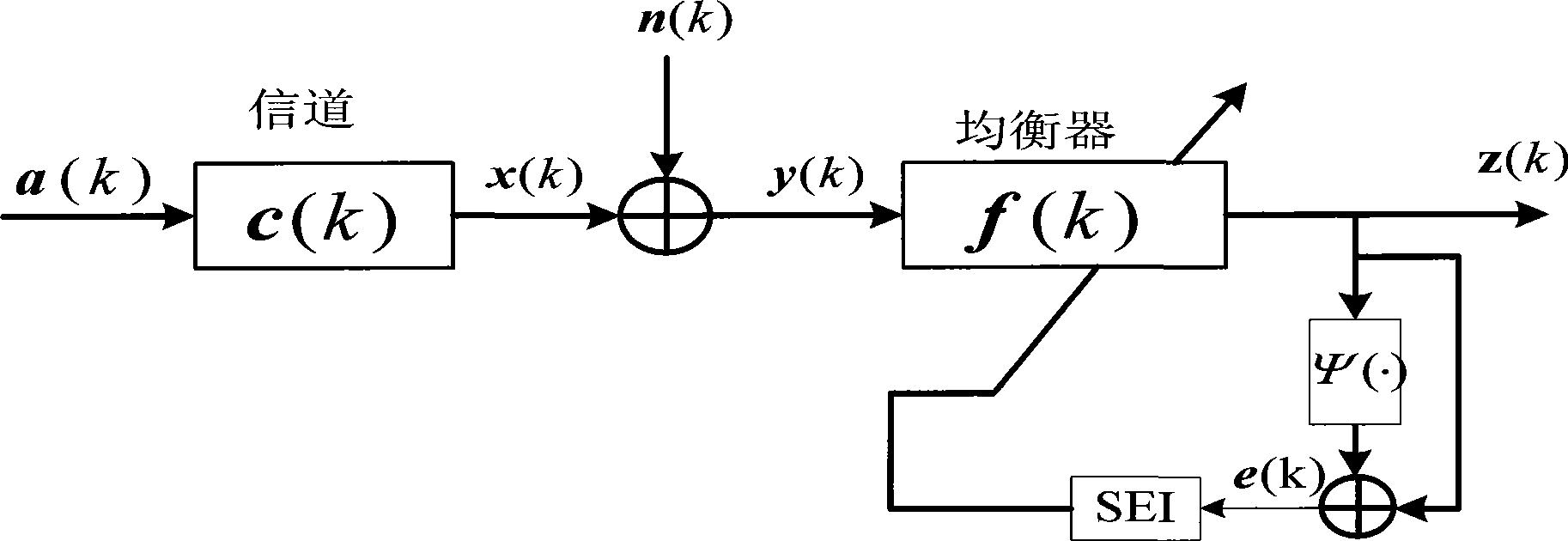Combined super-exponential iteration blind equalization algorithm based on orthogonal wavelet transform
An orthogonal wavelet, super-exponential technology, applied in electrical components, transmission systems, etc., can solve problems such as the autocorrelation of the input signal without changing the equalizer, the algorithm is unstable, and the phase rotation cannot be quickly corrected.
- Summary
- Abstract
- Description
- Claims
- Application Information
AI Technical Summary
Problems solved by technology
Method used
Image
Examples
Embodiment Construction
[0024] Such as figure 1 shown. The Super Exponential (SE) algorithm derives the Super Exponential Iterative (SEI) blind equalization algorithm. The SE blind equalization algorithm operates on data segments, while the SEI algorithm operates on data points, so the SEI algorithm can more effectively track the time-varying characteristics of the underwater acoustic channel. In the figure, k represents the time series, a(k) represents the signal transmitted by the transmitter, which is a white independent and identically distributed sequence with a variance of 1; c(k) is the channel impulse response vector; n(k) is the channel noise, generally assumed to be Gaussian white noise sequence and independent of signal statistics. y(k) is the input sequence of the equalizer, and y(k)=[y(k), y(k-1),..., y(k-L+1)] T ; f(k) is equalizer weight vector, and f(k)=[f(k), f(k-1),..., f(k-L+1)] T (L is the weight length, which is a positive integer, and T represents transposition); ψ(·) is a n...
PUM
 Login to View More
Login to View More Abstract
Description
Claims
Application Information
 Login to View More
Login to View More - R&D
- Intellectual Property
- Life Sciences
- Materials
- Tech Scout
- Unparalleled Data Quality
- Higher Quality Content
- 60% Fewer Hallucinations
Browse by: Latest US Patents, China's latest patents, Technical Efficacy Thesaurus, Application Domain, Technology Topic, Popular Technical Reports.
© 2025 PatSnap. All rights reserved.Legal|Privacy policy|Modern Slavery Act Transparency Statement|Sitemap|About US| Contact US: help@patsnap.com



